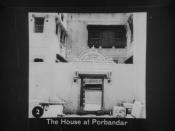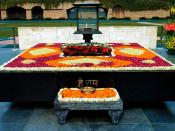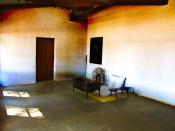'A Season Outside' is a personal and philosophical journey through the shadows of past generations, conflicting positions, borders and zones of conflict. Set in the border outpost of Wagah and narrated by Amar Kanwar, 'A Season Outside' seeks to encourage viewers towards pursuing tolerance.
The documentary explores the idea of non-violence: How can it prevail, in the face of history's atrocities? Through the painful memories of Indo-Pak partition during 1947, a trauma and heartache for many families in the subcontinent, through government inquiries into Mahatma Gandhi's philosophy of non-violence, through legends of 16th century Mughal attacks and through records of the aggression against Tibetan monks and families. This visual essay searches for a wisdom to transform conflict through a process of humanization.
The film begins with a row of sweating laborers lined up on either side of the border waiting to pass heavy bags of grain on to their opposite number.
They are dressed in bright blue or blood red costumes, making one wonder. Is it for show like the ceremonial hostility displayed by the troops that stomp and strut in a famous evening border closing ritual? Or is it so that they can be shot at more easily should they stray across the sacred line?
The sacred line, described as "12 inches wide and several miles deep", refers to the deep-rooted differences that are entrenched in the minds of people on both sides and hence, would take a long time to heal. Ubiquitous coils of barbed wire mark a zone where "only the butterflies and the birds are free to cross or rest on the wire as they do not disturb the circuit".
Does it not signify that the spirits of human beings on both sides of the border have been trapped such that no thoughts of...


